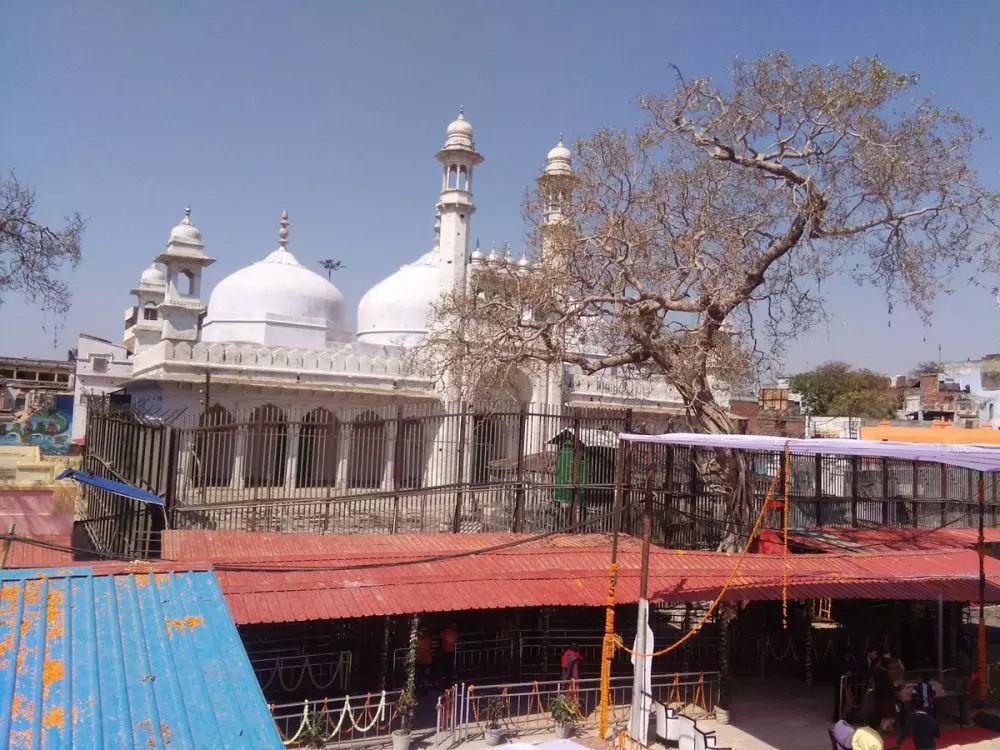
When the judiciary paves way for more new 'Ayodhyas'
text_fieldsThree and a half decades ago, when the Babri issue was being discussed countrywide, VHP's 'dharma sansad' (religious parliament), which convened in Delhi, presented a resolution in the regard. The gathering, attended by over 500 sanyasis, demanded that the temples in Ayodhya, Varanasi, and Mathura be handed over to the Hindus. The said resolution put forth indirectly that not only in Ayodhya but also the Kashi Vishwanath temple in Varanasi and the Sri Krishna temple in Mathura would be subjected to 'invasion' in a manner similar to Babri Masjid. Gyanvyapi Mosque in Varanasi and Shahi Eid Gah in Mathura were portrayed as markers of 'Muslim invasion'. After the resolution, Hindutva proponents also propagated that these Muslim places of worship, situated near Hindu temples, were seized during the Mughal and other periods. It was when matters reached a point when the campaign, happening simultaneously with calls for Babri land within and outside of the court, might have lead to another clash and riot, that Narasimha Rao intervened. As a part of that, the Centre passed the landmark law, the Place of Worship Act, 1991. According to this, the status of places of worship in the country shall remain the same as it was on 15 August 1947 and one cannot approach the court for the same, either. The only exception to this law is the Babri Masjid. Rao's intervention ensured the prevention of any other 'karseva' similar to or more horrible than the Babri Masjid, and the preservation of several places of worship. Perhaps if it were not for this law, the holy places of minorities would have been razed, citing false stories of 'invasion'. Hindutva proponents are now trying to revoke this law which provides protection on a broad scale, to minority communities in the country.
Last Friday, BJP-leader Ashwini Kumar Upadhyay submitted a petition requesting revisiting of the Places of Worship Act, to which the Supreme Court responded positively. The bench of Chief Justice SA Bobde has sent a notice to the Centre seeking the latter's explanation. The ministries of Home Affairs, Law and Justice and Culture must present the Centre's position to the apex court. The stance of the Centre can easily be guessed; the BJP was the sole party that opposed the Act when it was introduced. Naturally, the current Act may be scrapped or be subjected to drastic changes. Instead of doing this directly, what has now opened is a 'Triple Talaq Model' of making legislation via judicial intervention.
This cannot be viewed as purely coincidental. After the Babri verdict in 2019 November, the RSS and the Sangh Parivar have already declared repeatedly that their next agenda is Mathura and Varanasi. They have also filed several suits regarding this in courts across UP. Only a few days ago, one such case reached the Varanasi court which needs special note. The plea claims that there was a temple where the Gyanvapi masjid now stands with the prayer that permission be given to rebuild the temple demolished by Aurangzeb. Accepting the petition, the court has asked the state and central governments of their stance on the matter.
Yogi and Modi had already made their stance clear on the issue. All of Varanasi's 'developmental' activities happening today are based on this. With the judiciary's green flag, one can expect what is going to happen. In short, with these interventions by the judiciary, a change is highly likely in the existence of places of worship of minorities- and this will be detrimental to the values of religious tolerance which the nation had once upheld. The minorities of the country will now be pushed to dig up the foundations of their places of worship and prove its historical purity. The contention that Ram temple was lying under the Babri mosque was later proven as fabricated and founded on fake history. Even then, the minority community welcomed the Babri verdict, based on the wish for the issue to reach a resolution somehow. However, the same court now reminds us that this is just the beginning of more such issues. By paving the way for more 'Ayodhyas', whose voices is the judiciary echoing?





